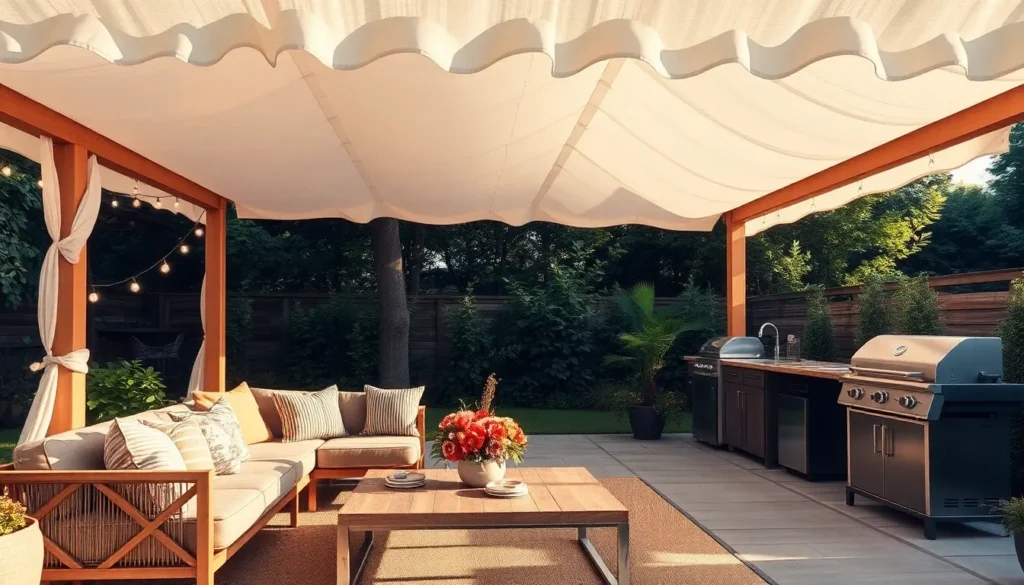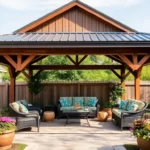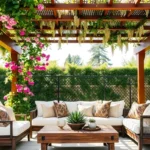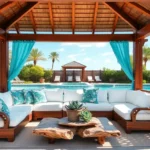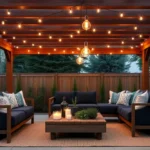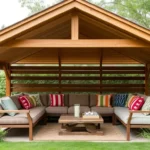Imagine stepping into your backyard and being greeted by the perfect blend of comfort and style, where every gathering feels like an escape to a personal paradise. Whether you’re just starting to explore the world of outdoor design or you’re a seasoned pro looking to elevate your space, our guide to “7 Canopy Shelter Ideas for Your Backyard” is your ticket to transforming your outdoor area into a delightful haven. With a variety of options tailored to diverse tastes and needs, this list is your go-to resource for creating a sheltered oasis that fits seamlessly into your lifestyle.
From enhancing your backyard’s aesthetics to providing practical solutions for sun and rain protection, these canopy ideas offer endless possibilities. You’ll discover how these structures can extend your living area, making your backyard not just an extension of your home, but a cherished retreat. Get ready to embrace the joy and rewards of beautiful outdoor living spaces, and feel confident as you embark on the journey to craft your perfect outdoor sanctuary.
Install Retractable Canopy Systems
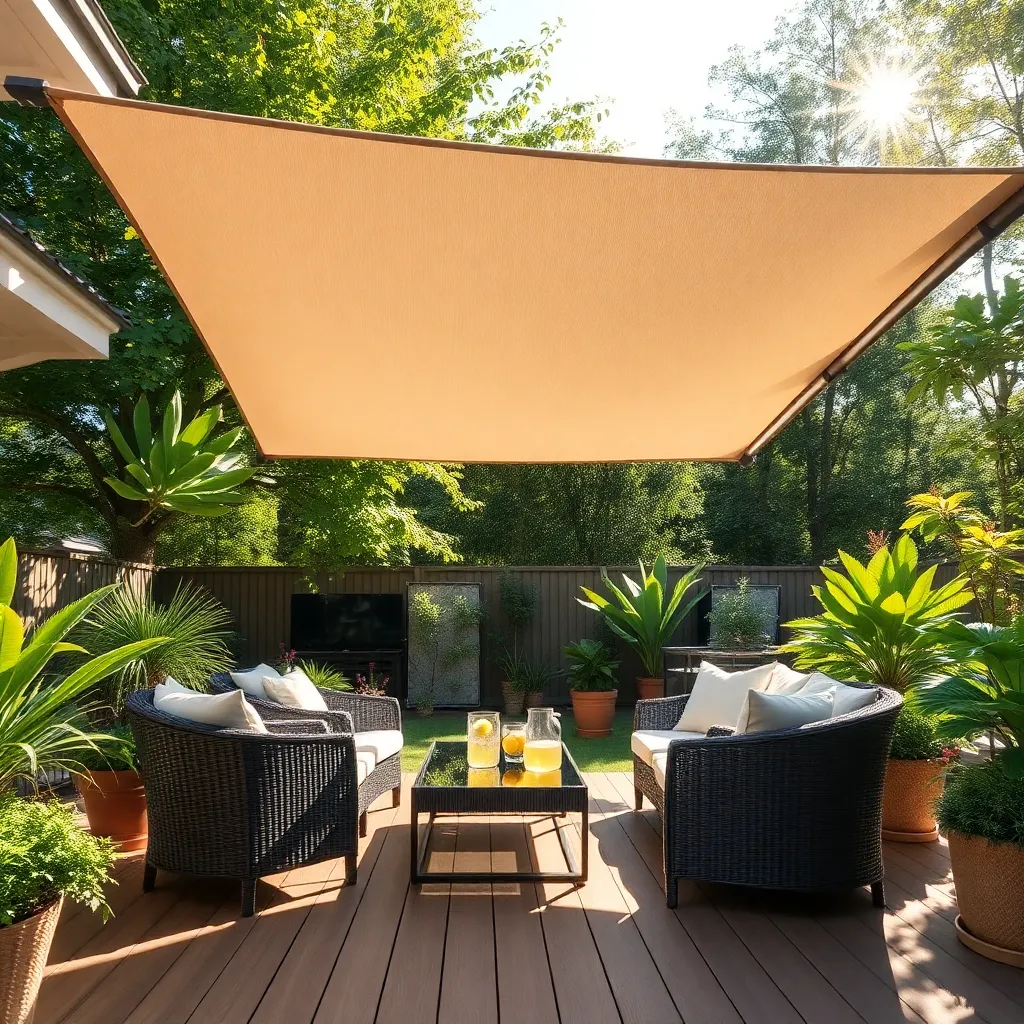
A retractable canopy system is an excellent choice for homeowners who want the flexibility to enjoy both sun and shade in their backyard. These systems are typically made from durable materials like aluminum frames and UV-resistant fabric, ensuring longevity and protection from the elements. For beginners, consider a manual model as an affordable and straightforward option; more advanced users might opt for motorized versions with remote control for added convenience. Ensure proper installation by securing the frame to sturdy structures like your home’s exterior wall or a pergola.
When planning your retractable canopy, think about the size and placement to maximize your outdoor space. Measure your area carefully to ensure the canopy covers the desired space without overwhelming your backyard. A common dimension is around 12×10 feet, but customize based on your needs. For a sleek and modern look, opt for neutral fabric colors that complement your outdoor furniture. Advanced users can integrate weather sensors that automatically retract the canopy during high winds or heavy rain, further protecting your investment.
- Remember to periodically clean the fabric and check the mechanisms for smooth operation.
- Regular maintenance will enhance the canopy’s lifespan and performance.
Incorporate Natural Shade Structures
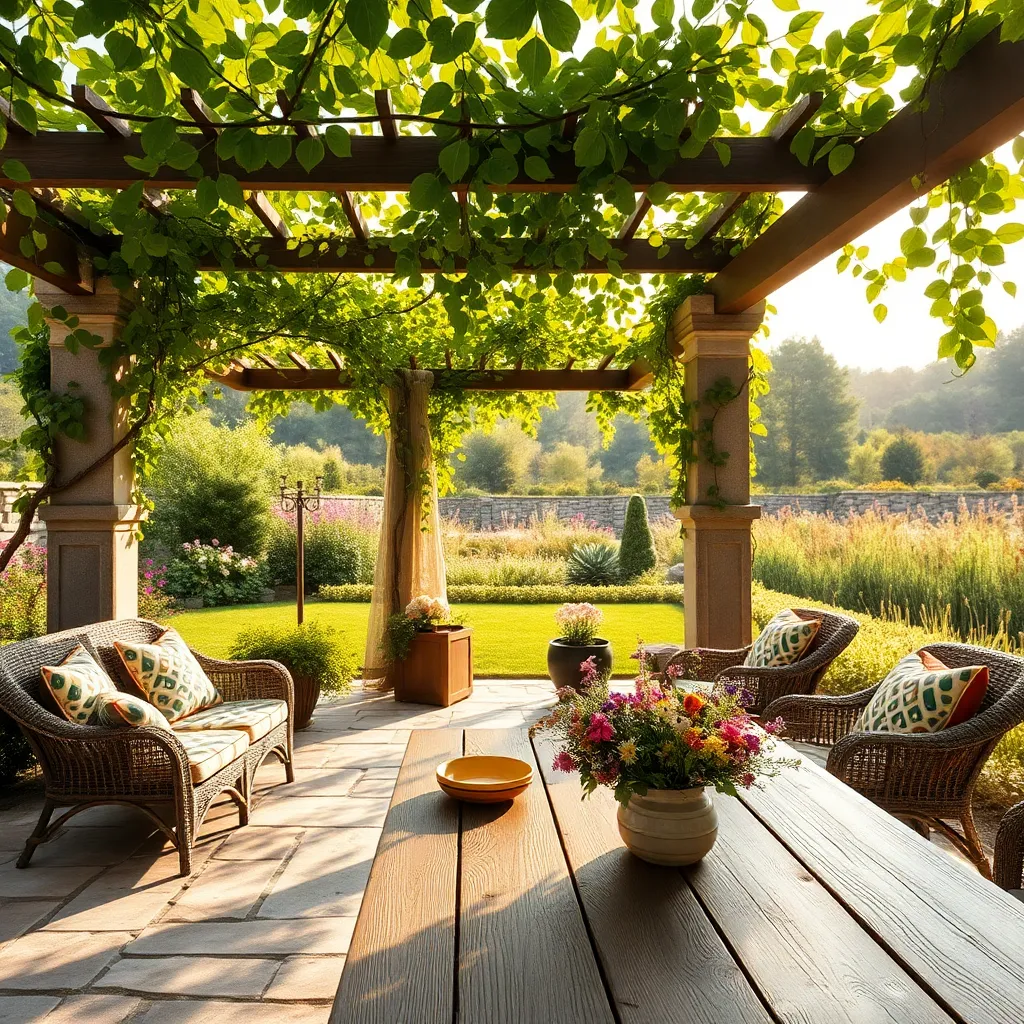
For a natural and aesthetically pleasing shade solution, consider incorporating living canopies like pergolas adorned with climbing plants. Choose fast-growing vines such as wisteria, clematis, or grapevines that can provide dense shade. Use durable materials like cedar or pressure-treated wood for the pergola structure to ensure longevity and resistance to the elements.
To enhance the shade and cooling effect, strategically plant deciduous trees such as maples or oaks around seating areas. These trees provide lush shade in summer while allowing sunlight to filter through in winter. For advanced gardeners, consider training tree branches into a natural canopy using pruning techniques to optimize shade coverage and aesthetics.
Utilize Pop-Up Canopy Tents
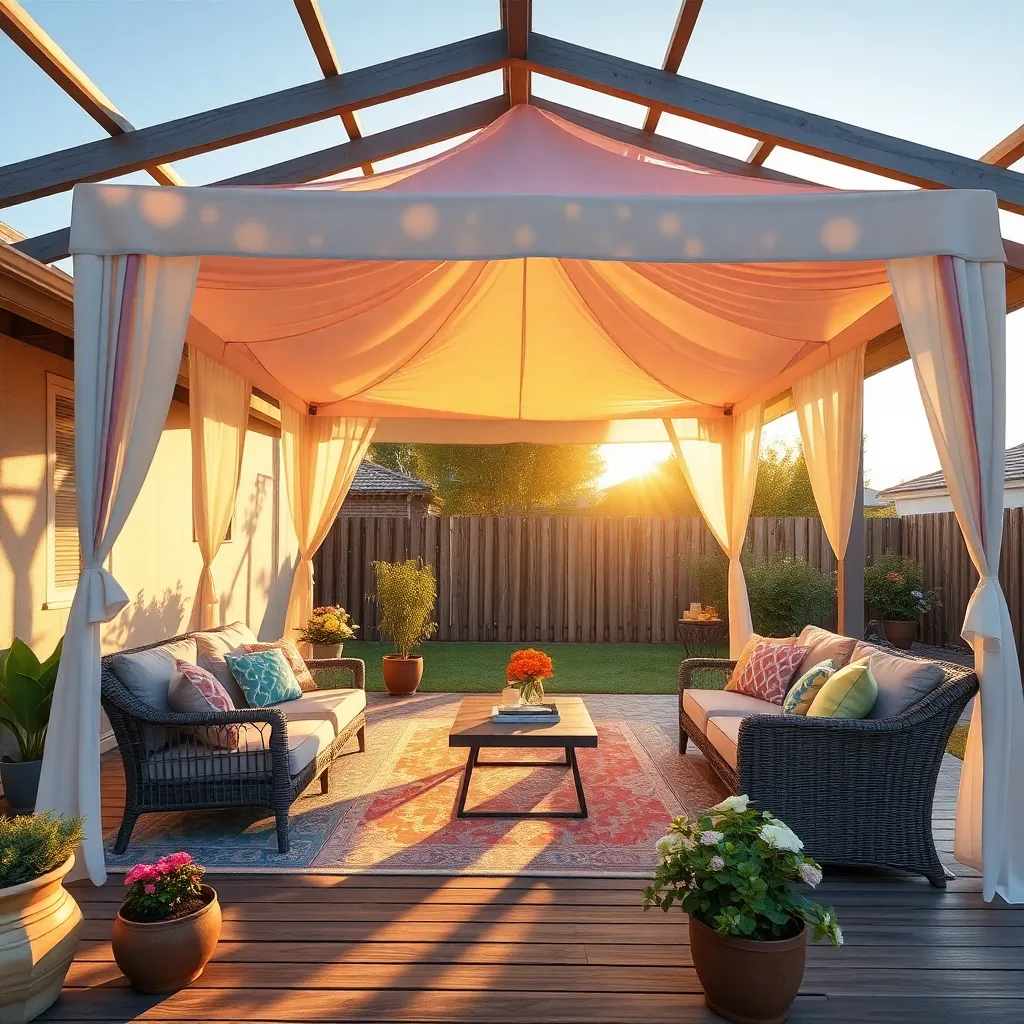
Pop-up canopy tents offer a versatile and convenient solution for backyard shade. These shelters are easy to set up and take down, making them perfect for both planned gatherings and spontaneous outdoor events. When selecting a pop-up canopy, consider the material of the canopy itself—opt for weather-resistant fabrics like polyester with UV protection to ensure durability and safety. For a standard backyard event, a tent size of 10×10 feet is generally sufficient, providing ample coverage for a table and several chairs.
Enhance the functionality of your pop-up canopy by incorporating sidewalls or mesh panels, which can offer additional protection against wind and insects. For more advanced setup, consider anchoring the tent with weighted bags or stakes to ensure stability, especially in windy conditions. If you’re looking for a more decorative touch, choose a canopy with a design that complements your outdoor aesthetic, such as neutral tones for a minimalist look or vibrant colors for a lively atmosphere. This adaptability makes pop-up canopies an ideal choice for any homeowner wanting to create a flexible outdoor space.
Add Pergolas With Climbing Plants
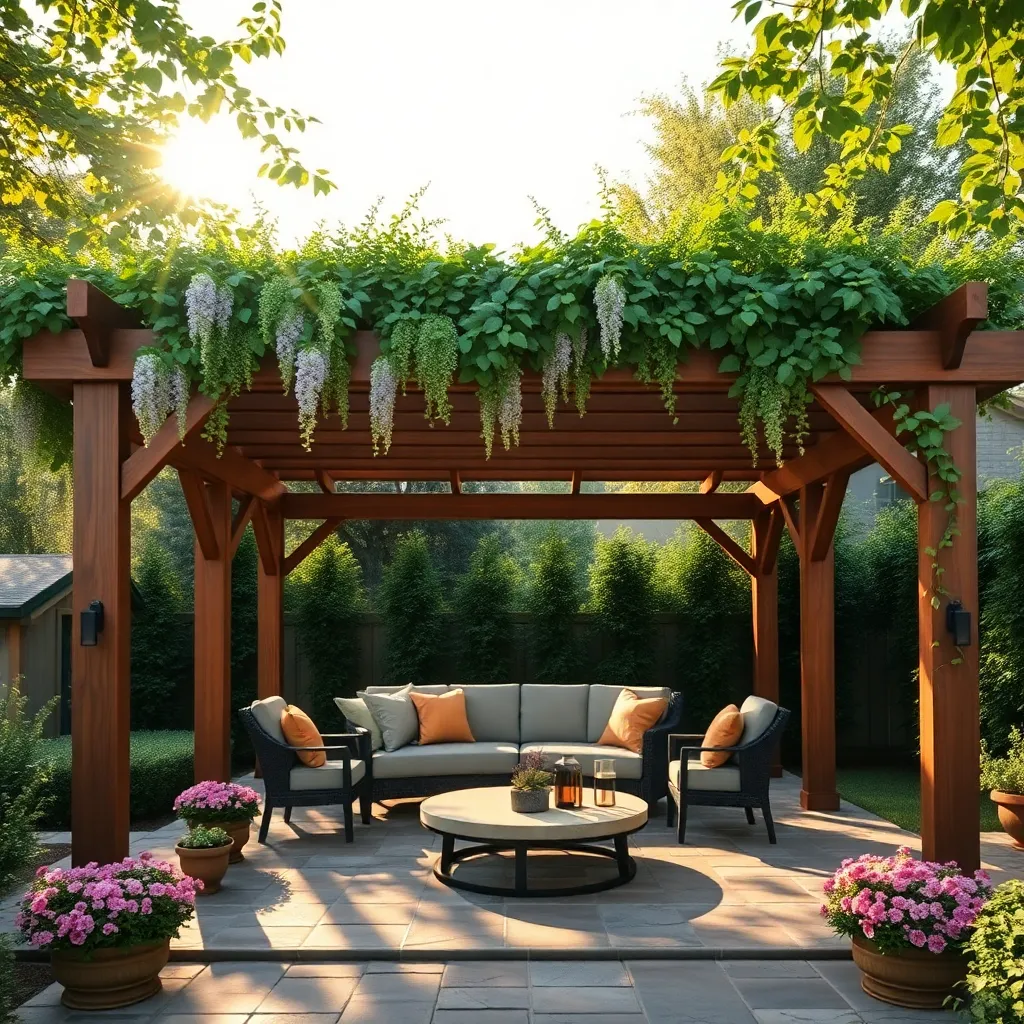
Integrating a pergola adorned with climbing plants is a fantastic way to add both shelter and natural beauty to your backyard. Start by selecting a robust material like cedar or pressure-treated wood for the frame, ensuring durability against the elements. Construct your pergola with a height of at least 8 feet to allow ample space for plant growth and to create an inviting, airy feel. For beginners, consider starting with simple plants like clematis or honeysuckle that are easy to maintain and provide vibrant blooms.
More advanced gardeners might explore using wisteria or grapevines, which offer lush coverage and seasonal interest. To maximize the effect, install a trellis or wire system on your pergola to guide plant growth and enhance structural support. Regular pruning and maintenance will ensure that your climbing plants thrive and your pergola remains a stunning focal point in the garden. By combining practical design with strategic plant choices, you can create a beautiful and functional outdoor shelter that enhances your backyard’s aesthetic appeal.
Create DIY Sail Shade Panels
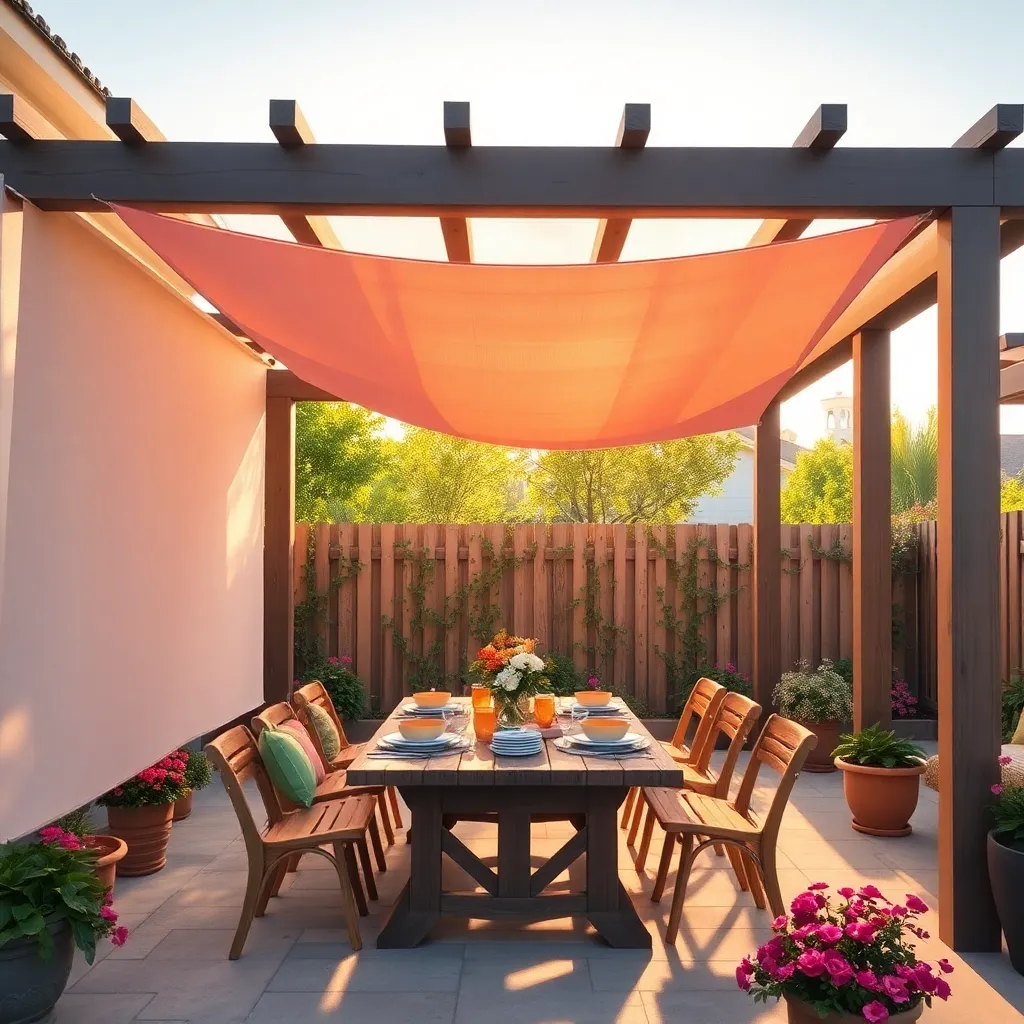
Transform your backyard into a stylish oasis by creating DIY sail shade panels. These versatile canopies not only provide much-needed shade but also add a modern touch to your outdoor space. Begin by selecting a durable fabric like high-density polyethylene (HDPE), which offers excellent UV protection and is resistant to tears. For installation, measure your area accurately and choose stainless steel hardware to prevent rust. Anchor the sails at three or four points using sturdy poles or existing structures like your house or trees, ensuring the fabric is taut for a sleek appearance.
For a more advanced setup, consider layering multiple sail shades to create dynamic visual interest and variable shade levels. Experiment with different shapes like triangles or rectangles to suit your aesthetic preferences and space constraints. Adjust angles by using adjustable turnbuckles, allowing you to tighten the fabric as needed and change the slope for rain runoff.
- Ensure there’s a minimum slope of 20% for rainwater drainage.
- Use a stud finder to secure attachments to structural points if mounting on buildings.
With these tips, you can enjoy a functional and attractive backyard retreat.
Enhance Privacy With Sidewalls
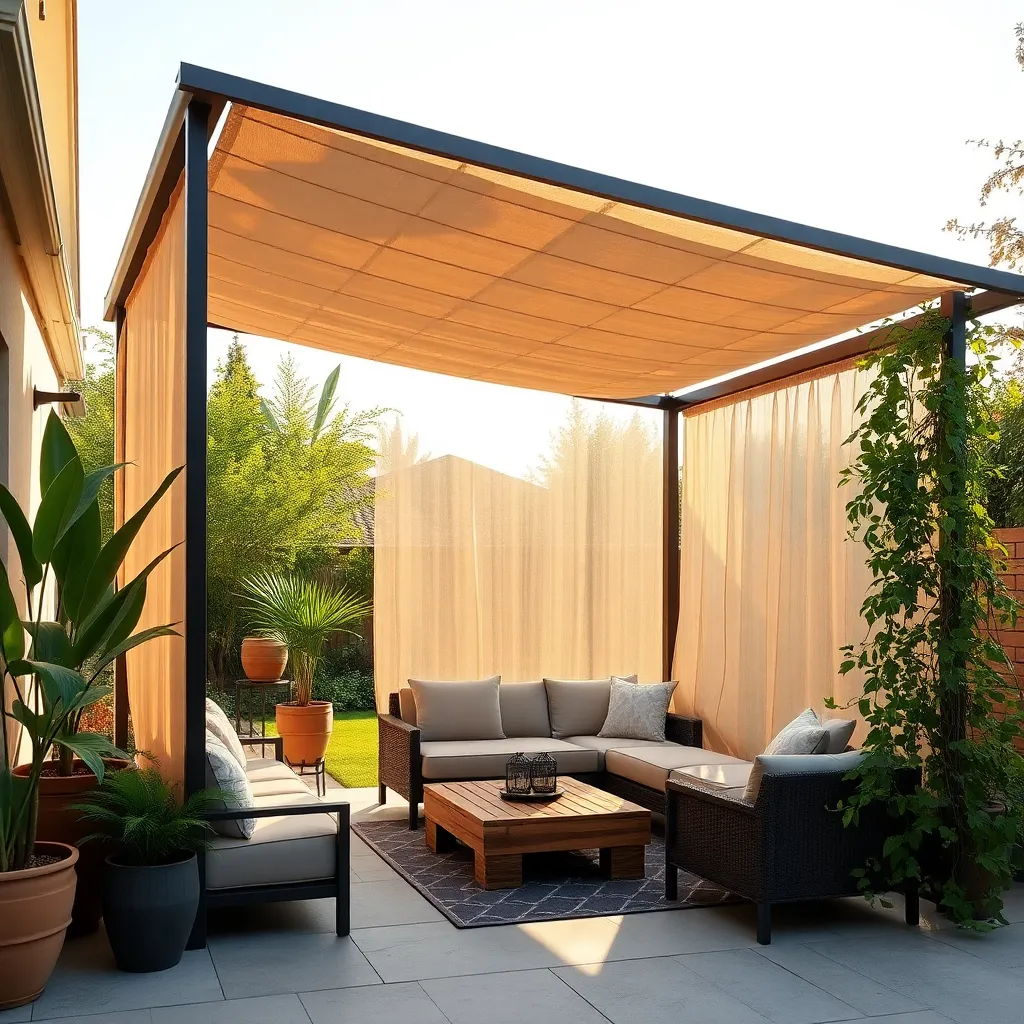
Enhancing privacy with sidewalls is a smart way to make your outdoor canopy shelter more intimate and protected. Choose materials like canvas, mesh, or weather-resistant fabric to suit your needs. Canvas offers maximum privacy and sturdiness, while mesh provides a balance of privacy and airflow. Attach these sidewalls using grommets and hooks or Velcro strips for easy installation and removal. Beginners can start with ready-made sidewalls, while more advanced DIYers might enjoy creating custom panels to match their outdoor decor.
For a tailored look, consider adding design elements like tiebacks or curtain-style sidewalls for easy opening and closing. Ensure the sidewalls are long enough to reach the ground for full coverage—measure your canopy’s height and add a few extra inches to account for uneven ground. Advanced gardeners can explore using sidewalls with multiple layers or adding features like clear vinyl windows for a versatile outdoor space. This approach not only enhances privacy but also adds a stylish touch to your backyard retreat.
Opt for Adjustable Awning Covers
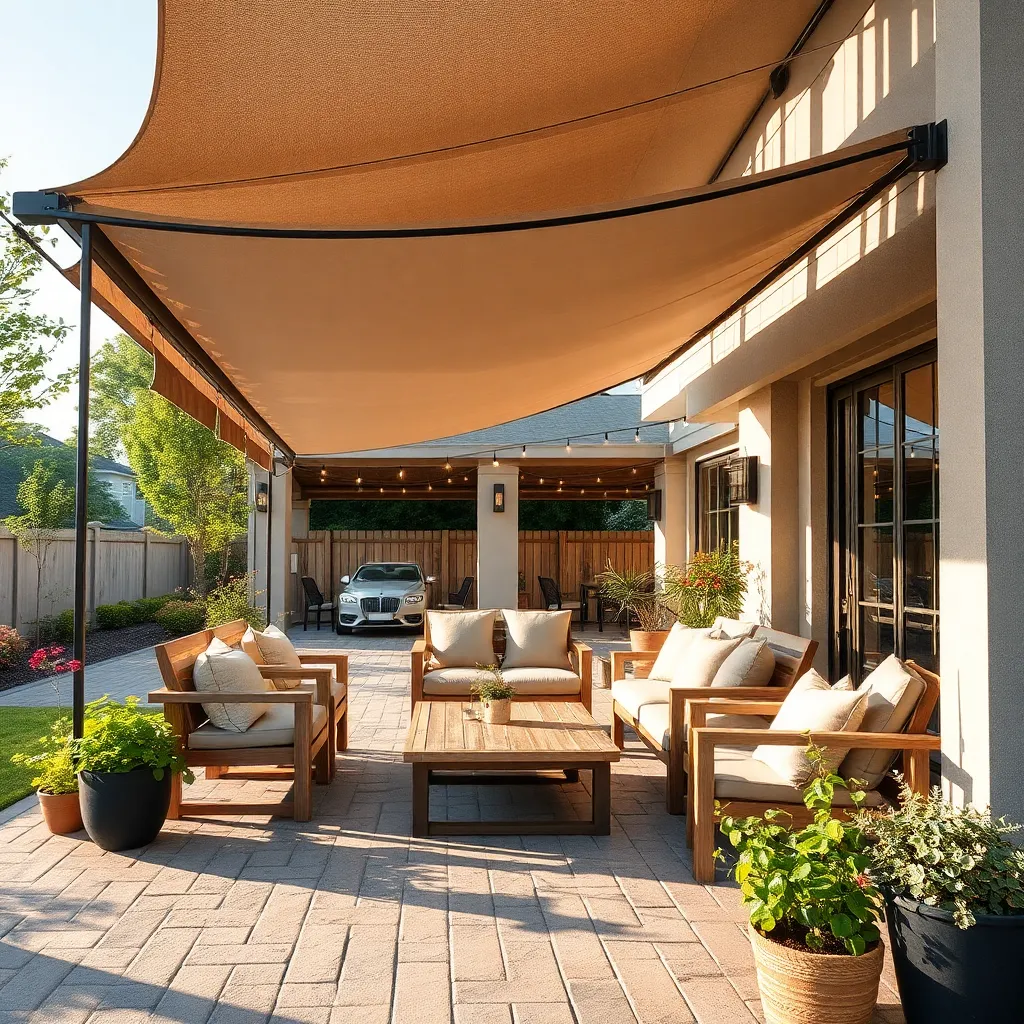
Adding adjustable awning covers to your backyard offers flexibility and style, allowing you to enjoy outdoor spaces regardless of the weather. Opt for materials like durable acrylic or polyester fabric with UV protection, which shield against harmful rays while resisting mold and mildew. Beginners can start with a simple retractable awning that’s easy to install, while more experienced DIYers might consider motorized options for added convenience.
Beyond their practicality, awning covers present an opportunity to enhance your backyard’s aesthetic. Choose colors and patterns that complement your exterior decor to seamlessly integrate the awning into your existing design. For a professional finish, ensure the awning is securely mounted with sturdy brackets and consider adding side flaps for extra coverage on breezy days. This combination of functionality and style makes adjustable awning covers a must-have for any backyard enthusiast.
Conclusion: Creating Beautiful Outdoor Spaces
As we’ve explored in ‘7 Canopy Shelter Ideas for Your Backyard,’ nurturing relationships is like crafting the perfect outdoor haven. First, we learned about the importance of creating a space for open communication, allowing trust and honesty to flourish like sunlight filtering through leaves. Next, the importance of shared experiences and mutual goals was highlighted, akin to a sturdy framework that supports a canopy. We touched on adaptability, learning to weather the storms together, and the value of personal space, which, like a cozy corner under the canopy, nurtures individuality within unity. Aesthetic harmony underscores the beauty of complementary strengths, while regular maintenance—our sixth idea—ensures longevity. Finally, we embraced the role of innovation, keeping the relationship dynamic and exciting.
Now, take a moment to identify one aspect of your relationship that could benefit from these insights. Whether it’s planning a shared activity or opening a dialogue, act on it today. As you embark on this journey, bookmark this article to revisit these ideas and fortify your bond.
With these tools at hand, envision a future where your relationship thrives, much like a beautifully crafted canopy, offering shelter, warmth, and endless possibilities. Your relationship success story starts here—save this guide and let it inspire ongoing growth.

